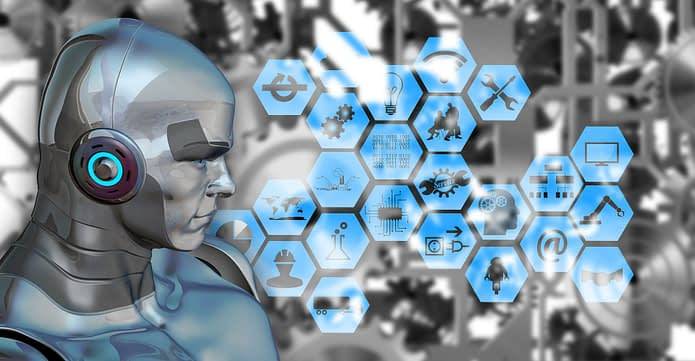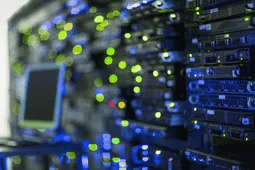Industry Dynamics
Why the Industrial Internet of Things (IIoT) will be a game changer
Counts:264 Time: 22-05-01 From: Suzhou Teknect Engineering Co., Ltd.The community is going through another industrial revolution, this time the Internet of Things or the Internet of Things that caused it. As more and more companies adopt IoT, the IIoT or IIoT is becoming increasingly important. IIoT is a branch of the IoT. It helps make industrial processes more accessible, more efficient, and in most cases more affordable.

The IIoT is all about harnessing the synergy of connected devices to get better data that leads to better output for consumers. So what can we expect in the coming years? How will IIoT shape our future? Here is a list of our predictions:
LPWAN will be the next big thing that will make communication easier.
Current industrial systems rely on different proprietary networks for communication. Such a network does not facilitate data exchange, and there are terrain limitations that make it difficult to reach its full potential. LPWAN or low-power WAN can help us cope with these difficulties and reduce costs.
These LPWAs are expected to support more than 3 billion IoT devices. They offer ultra-low power consumption, powerful penetration and long distances. This will greatly facilitate communication in industrial processes. The cost-effective nature of LPWAs will further incentivize the industry to use them.

Mainstreaming LPWAN will require sufficient hardware availability and security to process information securely and reliably. It also requires broader availability and adequate personnel deployment. However, we can safely conclude that LPWAN is the future and will be part of everyday industrial life.
End-to-end encryption will eventually become a reality
Recently, industrial data or data as a whole has been vulnerable to frequent attacks. It has cost organizations millions of dollars, which may have something to do with the sensitivity of IoT devices. Since it's a relatively new technology, no one has yet claimed that it's 100% secure, which is a major hurdle. As IoT devices gain wider acceptance, we need a secure system that can keep data intact without any intrusion.
One possible way out is to use Advanced Encryption Standard (AES) with Transport Layer Security (TLS). AES can be used for data link layer encryption in relatively low-power IoT networks, and TLS is an application-layer encryption protocol that helps secure web communications. The industry must use them together for end-to-end encryption, which will ensure that data flows without leakage. We are already experiencing a massive increase in the amount of data generated by IoT devices, which will only make encryption more difficult. Therefore, we need solutions that can reassure the industry that IoT devices are secure.
The interdependence of IoT products will spawn a new frontier.

IoT devices have the ability to communicate with each other and rely on each other in an industrial environment. Although their technical specifications and manufacturers are different, they are able to communicate easily.
The essence of the IoT environment is that no single device can produce complete information. Data must be passed and processed through a variety of tools to make it viable. This structure should create a different field where vendors will push for exclusive solutions tailored to the needs of a particular industry.
This will ensure that the industry is able to maximize the potential of the IoT devices they use. With the help of these customized solutions, companies will be able to identify and resolve problems in their operations to improve their financial performance.
With the help of the Industrial Internet of Things, the industry will be able to create digital copies of critical assets
What does X-ray do? They created a digital print of part or whole of our body, which allowed doctors to identify where the problem lay and where it needed to be fixed. Such a process will also be introduced into the industrial world.
IoT will be able to provide a digital twin of any physical object; this will enable faster, more accurate, and lower-cost solutions. It will also help the industry significantly reduce idle time, which will stimulate their production. Gartner predicts that nearly half of large enterprises will use digital replicas to help their production processes in the near future.
This is a welcome change as it is expected to significantly reduce the industry's operating costs and unforeseen failures. Connecting the physical world with the digital world will also bring other synergies, such as obtaining cost-effective and reliable output.
Edge computing will
The original content provider in the tech sector of the Technological Republic predicts that by 2020, ioT devices will collect a massive amount of 507.50 zettabytes. It is impossible for a machine to process such a huge amount of data centrally. This will lead to the development of edge computing, where data processing takes place as close as possible to the source where it was generated. Not only will this be more convenient, but it will also reduce latency and the likelihood of data loss in transit. It also means that more and more organizations will seek to leverage the data generated by the IoT in real time and combine the processed data to create better products. We will see more organizations using the infrastructure required for edge computing, rather than passing data to another source for processing.
conclusion
Industries no longer need to choose whether to participate in this industrial revolution or let it pass. If they are not willing to become the standard-bearer of this change, they will be eliminated from the already fierce competition. In the long run, those who think of ioT as a farce will fail. The IIoT gets a lot of hype, which may seem irrational to some extent, but makes a lot of sense. We will see an increase in the use of IIoT devices, which will drive growth and innovation in the coming years. We can also expect more and more industries to join the ranks of the already growing number of IoT advocates. To stay ahead of the curve, you must adopt IIoT and use it in the best possible way.

 ENGLISH
ENGLISH  简体中文
简体中文